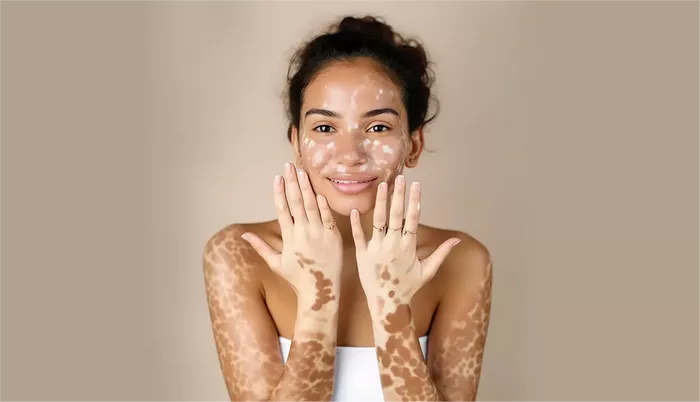Vitiligo is a chronic skin condition characterized by the loss of pigment, resulting in white patches on various parts of the body. This condition affects approximately 1% of the global population and can significantly impact an individual’s quality of life, leading to emotional and psychological distress. While there is no definitive cure for vitiligo, several treatment options are available to manage and improve the appearance of the affected skin. Among these options, vitiligo surgery has emerged as a promising approach for certain patients. This article delves into the various aspects of vitiligo surgery, including its types, benefits, risks, and post-surgical care.
Understanding Vitiligo
Vitiligo occurs when melanocytes, the cells responsible for producing melanin (the pigment that gives skin its color), are destroyed or stop functioning. The exact cause of vitiligo is not fully understood, but it is believed to involve a combination of genetic, autoimmune, and environmental factors. The condition can affect people of all skin types but is more noticeable in individuals with darker skin.
Types of Vitiligo
There are several types of vitiligo, classified based on the distribution and extent of depigmentation:
- Generalized Vitiligo: The most common form, characterized by widespread white patches on both sides of the body.
- Segmental Vitiligo: Depigmentation occurs on one side of the body, often in a localized area, and typically develops at an early age.
- Focal Vitiligo: Limited to a few areas and does not spread over time.
- Acrofacial Vitiligo: Affects the extremities and face.
- Universal Vitiligo: An extensive form involving most of the body.
Types of Vitiligo Surgery
Vitiligo surgery aims to restore pigmentation in depigmented areas through various techniques. The suitability of each method depends on the extent of vitiligo, the patient’s overall health, and their treatment goals. Here are the main types of vitiligo surgery:
1. Autologous Skin Grafting
Autologous skin grafting involves transplanting healthy, pigmented skin from one part of the patient’s body to the depigmented areas. This technique is typically used for stable, localized vitiligo patches. The procedure involves the following steps:
- Donor Site Selection: Healthy skin is usually harvested from areas with minimal sun exposure, such as the buttocks or inner thighs.
- Grafting Process: The pigmented skin is carefully removed, processed, and transplanted onto the vitiligo-affected areas.
- Healing and Repigmentation: The grafted skin undergoes a healing process, and over time, it blends with the surrounding skin, leading to repigmentation.
2. Blister Grafting
Blister grafting involves creating blisters on the pigmented skin using suction, heat, or freezing. The tops of these blisters are then transplanted onto the depigmented areas. This technique is less invasive than traditional skin grafting and is suitable for smaller, stable vitiligo patches. The steps include:
- Blister Formation: Blisters are induced on the healthy, pigmented skin.
- Blister Transplantation: The tops of the blisters are removed and placed onto the vitiligo patches.
- Healing Process: The transplanted blister tops adhere to the depigmented skin, leading to gradual repigmentation.
3. Melanocyte Transplantation
Melanocyte transplantation, also known as non-cultured melanocyte-keratinocyte transplantation, involves harvesting melanocytes (pigment-producing cells) from healthy skin and transplanting them into the vitiligo-affected areas. This technique is suitable for patients with stable vitiligo. The procedure involves:
- Cell Harvesting: A small sample of healthy, pigmented skin is taken from the patient.
- Cell Processing: The sample is processed to isolate melanocytes and keratinocytes.
- Transplantation: The cell suspension is applied to the depigmented areas after superficial dermabrasion or laser treatment.
- Repigmentation: The transplanted cells promote repigmentation over time.
4. Micropigmentation (Tattooing)
Micropigmentation, also known as medical tattooing, involves implanting pigment into the skin using a fine needle. This technique can be used to camouflage vitiligo patches, especially in cases where other surgical methods are not feasible. However, it is not a permanent solution, and the pigment may fade over time. The procedure includes:
- Color Matching: Selecting a pigment that matches the patient’s natural skin tone.
- Pigment Implantation: Using a tattooing device to implant the pigment into the depigmented areas.
- Maintenance: Periodic touch-ups may be required to maintain the desired appearance.
SEE ALSO: The Best Treatment for Vitiligo on Hands
Benefits of Vitiligo Surgery
Vitiligo surgery offers several benefits for individuals seeking to improve the appearance of their skin and enhance their quality of life:
1. Improved Aesthetic Appearance
Surgical interventions can effectively restore pigmentation in depigmented areas, resulting in a more uniform skin tone. This can significantly boost a patient’s confidence and self-esteem.
2. Long-Term Results
Unlike topical treatments and phototherapy, which may require ongoing maintenance, surgical methods can provide long-lasting results, especially in cases of stable vitiligo.
3. Minimally Invasive Options
Some surgical techniques, such as blister grafting and melanocyte transplantation, are minimally invasive and have shorter recovery times compared to traditional skin grafting.
4. Customized Treatment
Vitiligo surgery can be tailored to meet the specific needs and goals of each patient, considering factors such as the extent of vitiligo, skin type, and overall health.
Risks and Complications
As with any surgical procedure, vitiligo surgery carries certain risks and potential complications. It is essential for patients to be aware of these before deciding to undergo surgery:
1. Infection
There is a risk of infection at both the donor and recipient sites. Proper wound care and hygiene are crucial to minimize this risk.
2. Scarring
Surgical procedures can lead to scarring, especially if the healing process is not optimal. The risk of scarring varies depending on the technique used and the individual’s skin type.
3. Pigment Mismatch
In some cases, the transplanted skin or pigment may not perfectly match the surrounding skin, leading to a noticeable difference in color.
4. Graft Failure
The transplanted skin or cells may not take successfully, resulting in graft failure. This can occur due to various factors, including poor blood supply to the recipient area.
5. Recurrence of Depigmentation
While surgical methods can provide long-lasting results, there is a possibility of depigmentation recurring in the treated areas.
6. Allergic Reactions
In rare cases, patients may experience allergic reactions to materials used during the surgical procedure, such as adhesives or anesthesia.
Post-Surgical Care and Recovery
Proper post-surgical care is crucial for optimal healing and repigmentation. Patients should follow their healthcare provider’s instructions diligently to minimize complications and achieve the best possible results. Post-surgical care may include:
1. Wound Care
Patients should keep the surgical sites clean and dry, following the recommended wound care regimen. This may involve using prescribed ointments, changing dressings, and avoiding activities that may disrupt the healing process.
2. Sun Protection
Protecting the treated areas from sun exposure is essential to prevent further depigmentation and promote healing. Patients should use broad-spectrum sunscreen with a high SPF and wear protective clothing when outdoors.
3. Avoiding Trauma
Patients should avoid any trauma or friction to the treated areas, as this can disrupt the healing process and affect the outcome of the surgery.
4. Follow-Up Appointments
Regular follow-up appointments with the healthcare provider are necessary to monitor the healing process and address any concerns or complications that may arise.
5. Patience and Realistic Expectations
It is important for patients to have realistic expectations regarding the results of vitiligo surgery. Repigmentation can take time, and multiple sessions may be required to achieve the desired outcome. Patience and adherence to post-surgical care instructions are key to successful recovery.
Conclusion
Vitiligo surgery offers a promising option for individuals seeking to restore pigmentation and improve the appearance of their skin. With various surgical techniques available, patients can benefit from customized treatment plans tailored to their specific needs. While vitiligo surgery carries certain risks and potential complications, the benefits of improved aesthetic appearance and long-term results make it a viable option for many patients. By understanding the different surgical methods, potential risks, and post-surgical care requirements, individuals with vitiligo can make informed decisions about their treatment and embark on a journey towards enhanced quality of life and self-confidence.
Related Topics:























